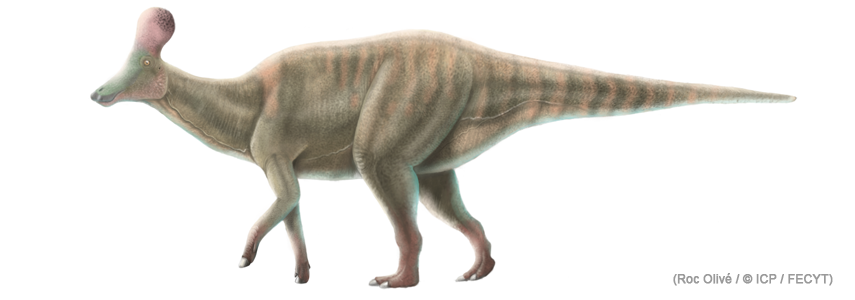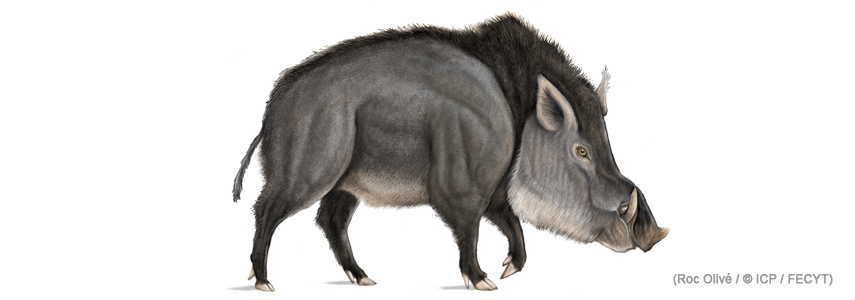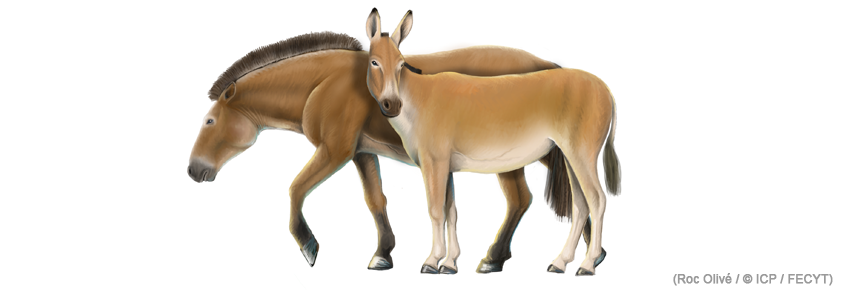
Director
Paleobiodiversity & Phylogeny Research Group Leader
Address
Institut Català de Paleontologia Miquel Crusafont Universitat Autònoma de Barcelona,
Edifici ICTA-ICP, c/ Columnes s/n, 08193 Cerdanyola del Vallès, Barcelona, Spain.
- ORCID: https://orcid.org/0000-0002-8886-5580
- Scopus: https://www.scopus.com/authid/detail.uri?authorId=56248806600
- Web of Science Researcher ID: https://www.webofscience.com/wos/author/record/G-9716-2015
- Google Scholar: https://scholar.google.com/citations?user=QdM1WL8AAAAJ&hl=ca&inst=2086209426759054600&oi=ao
Abridged curriculum
I am a vertebrate paleontologist and paleoanthropologists based at the Institut Català de Paleontologia Miquel Crusafont (ICP-CERCA). I obtained my PhD at the University of Barcelona in 2005 with a dissertation fon fossil hominoids supervised by Salvador Moyà-Solà at the Institut de Paleontologia M. Crusafont (Diputació de Barcelona) thanks to a predoctoral fellowship from the Generalitat de Catalunya. After a few years (2003-2006) working for the private sector (paleontological services), I rejoined academia with a ‘Beatriu de Pinós’ postdoctoral contract (2006–2008) at the Biological Anthropology Unit of the UAB supervised by Assumpció Malgosa. Subsequently, I was senior visiting postdoc (2008–2009) at the University of Florence (Italy) under the supervision of Lorenzo Rook until I joined the ICP in late 2009 with a five-year ‘Ramón y Cajal’ contract. During that period, I was also visiting researcher (2012–2013) at the University of Turin (Italy) and undertook shorter stays in other foreign institutions (American Museum of Natural History and Stony Brook University in New York, USA). I was granted MINECO’s I3 Program certificate in 2013 and awarded with the ‘best scientific article’ prize of the Societat Catalana de Biologia in 2016. At the ICP, I have been the leader of the Paleobiodiversity & Phylogeny Research Group (formerly Neogene & Quaternary Faunas) since 2012 and I am also the head of the Research Department and the current Director since 2017.
My main lines of research focus on (1) paleobiology, phylogeny and evolution of catarrhine primates and other vertebrates from the Neogene and Quaternary of Europe; and (2) vertebrate paleobiodiversity dynamics during the Miocene, with emphasis on faunal turnovers in relation to paleoenvironmental change. I have participated in multiple R+D+I projects, often as principal investigator. These include projects funded by the Spanish Government and two consolidated research groups of the Generalitat de Catalunya, in addition to three projects financed by the National Geographic Society and three funded by the Culture Department of the Generalitat de Catalunya. I also participated in a European training network funded by the European Commission and aimed to retrieve paleoproteomic data from fossils. My scientific outputs include >250 papers, many of them published in indexed multidisciplinary or specialized journals, as well as >200 contributions to >100 scientific meetings. I have also described multiple new taxa, published science popularizing articles and books, and participated in other dissemination and outreach activities (such as conference cycles, museum exhibits, documentaries, and radio/TV programs). Over the years, I have supervised multiple students, including many BSc/DEA/MSc theses, nine completed (plus five ongoing) PhD dissertations, and five postdoctoral ('Beatriu de Pinós' and 'Juan de la Cierva') researchers. Furthermore, I have been a member of various PhD committees, I have longstanding teaching experience in university masters, and I am accredited as full professor in Sciences (Catalonia) and in Anthropology and Paleontology i(Italy). I have also extensively devoted to editorial service, having acted as reviewer for many journals and having served for various scientific journal editorial boards, including that of Journal of Human Evolution between 2013 and 2024 (including four years as co-Editor-in-Chief). Since 2018, I am also a member of the NOW database Advisory Board (in charge of hominoid primates). Finally, I have ample experience in the direction of paleontological fieldwork (e.g., Vallparadís, Can Llobateres, and Abocador de Can Mata), which has led to important fossil primate discoveries that have been prominently featured in the media.
The 10 most relevant publications:
- Bouchet F*, Zanolli C, Urciuoli A, […] Alba DM* [9/9]. 2024. The Miocene primate Pliobates is a pliopithecoid. Nat. Commun. 15:2822. doi: 10.1038/s41467-024-47034-9
- Alba DM* [1/13], Robles JM, Casanovas-Vilar I, […] Garcés M. 2022. A revised (earliest Vallesian) age for the hominoid-bearing locality of Can Mata 1 based on new magnetostratigraphic and biostratigraphic data from Abocador de Can Mata (Vallès-Penedès Basin, NE Iberian Peninsula). J. Hum. Evol. 170:103237. doi: 10.1016/j.jhevol.2022.103237
- Almécija S*, Hammond AS, Thompson NE, Pugh KD, Moyà-Solà S, Alba DM. 2021. Fossil apes and human evolution. Science 372: eabb4363. doi: 10.1126/science.abb4363
- Urciuoli A*, Zanolli C, Almécija S, […] Alba DM* [10/10]. 2021. Reassessment of the phylogenetic relationships of the late Miocene apes Hispanopithecus and Rudapithecus based on vestibular morphology. Proc. Natl. Acad. Sci. USA 118: e2015215118. doi: 10.1073/pnas.2015215118
- Urciuoli A*, Zanolli C, Beaudet A, Dumoncel J, Santos F, Moyà-Solà S, Alba DM*. 2020. The evolution of the vestibular apparatus in apes and humans. eLife 9: e51261. doi: 10.7554/eLife.51261
- Alba DM*, Almécija S, DeMiguel D, Fortuny J, Pérez de los Ríos M, Pina M, Robles JM, Moyà-Solà S. 2015. Miocene small-bodied ape from Eurasia sheds light on hominoid evolution. Science 350: 528, aab2625. doi: 10.1126/science.aab2625
- Alba DM*, Delson E, Carnevale G, Colombero S, Delfino M, Giuntelli P, Pavia M, Pavia G. 2014. First joint record of Mesopithecus and cf. Macaca in the Miocene of Europe. J. Hum. Evol. 67: 1-18. doi: 10.1016/j.jhevol.2013.11.001
- Alba DM*. 2012. Fossil apes from the Vallès-Penedès Basin. Evol. Anthropol. 21: 254-269. doi: 10.1002/evan.21312
- Casanovas-Vilar I*, Alba DM, Garcés M, Robles JM, Moyà-Solà S. 2011. Updated chronology for the Miocene hominoid radiation in Western Eurasia. Proc. Natl. Acad. Sci. USA 108: 5554-5559. doi: 10.1073/pnas.1018562108
- Moyà-Solà S*, Köhler M, Alba DM, Casanovas-Vilar I, Galindo J. 2004. Pierolapithecus catalaunicus, a new Middle Miocene great ape from Spain. Science 306: 1339-1344. doi: 10.1126/science.1103094
[last updated 23 December 2024]






















